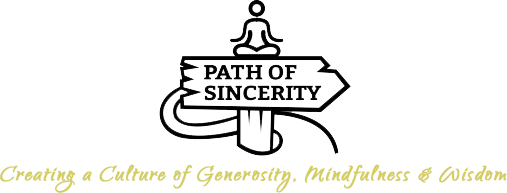
I’ve spent several thousand hours doing both of these approaches, and I can definitively say that one isn’t better than the other. Some of my most profound meditative experiences came with eyes open, and others with eyes closed.
Like most things, they each have their own advantages and disadvantages. Here’s some brief reflections:
The primary advantage of eyes closed
By removing visual stimuli, a whole layer of ‘potential’ distraction is removed. This makes it easier for many folks to stay aware. This extra ease applies to all styles of meditation, but especially for concentration-centered practices.
The primary advantage of eyes open
It teaches us we don’t have to be sitting still with eyes closed to have a meditative mind. We slowly learn that visual stimuli aren’t actually a distraction. They are just another thing to be aware of, and can actually be an aid to awareness! The major takeaway of this style is that it makes it easier to be aware in daily life (because, of course, we have our eyes open all day long!).
The disadvantages of each method are just the opposites
Meditating with eyes closed means it will be less natural for us to practice in daily life. And meditating with eyes open bring more stimuli, which especially for beginners, makes it more challenging to stay aware.
How to use this information?
With beginners, meditating with eyes closed is usually the most helpful. However, once they’ve got the basics down, I usually advise people to get familiar with both approaches. Not in the same session – but rather spend a few months doing one, and then a few months doing the other. After that, then you can alter it day-by-day, depending on what feels most beneficial for you.
Ultimately, it’s not actually that important; meditation is the work of awareness, not of the eyes!
A few important notes on practical application
1) If you feel sleepy, I strongly advise meditating with your eyes open, as it provides about a 20% alertness boost.
2) When meditating with your eyes open, just allow your eyes to be natural. You don’t need to make an effort to have some particular type of gaze. You don’t need a vacant, wide-angle or panoramic gaze.
Rather, look up from this screen for a moment into the distance. How are your eyes when you’re just naturally looking into space? Let your eyes be like that.
It can be helpful to use a “gazing point,” like a marking on the wall or the corner of a table, that’s at the center of your gaze. The danger with this is that some people start to stare at the “gazing point” very intensely, and then get tense. Hopefully, just by reading these few sentences, you would be able to use a “gazing point” but keep a soft, relaxed, natural gaze. When in doubt, just soften and relax!
3) Especially with eyes closed, learn what it’s like to release all muscular clenching in your eye sockets, the space between your eyebrows and your forehead. Let the whole region be soft, relaxed and at ease. No scrunching your eyelids. When in doubt, just soften and relax!

Great tips David, thank you! I’ve been leary to try meditating with my eyes open but with your encouragement feel I want to try it out.
Peace-
D’Alene
Very good take on this “issue.” I started w/ Soto Zen back in the late 1970’s– which is always eyes open sytaring at a blank wall, which I appreciate as in long vipassana retreats I use eyes open as an energy boost when needed. Thanks for this.
This. is very helpful. thanks
Thankyou!